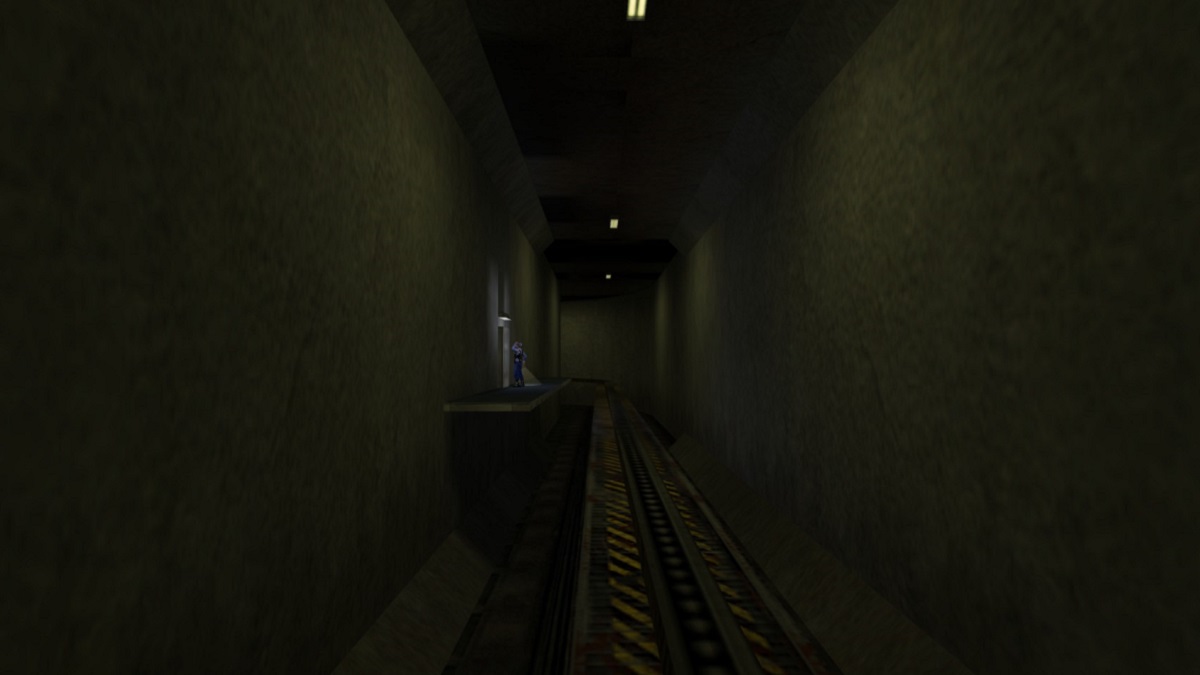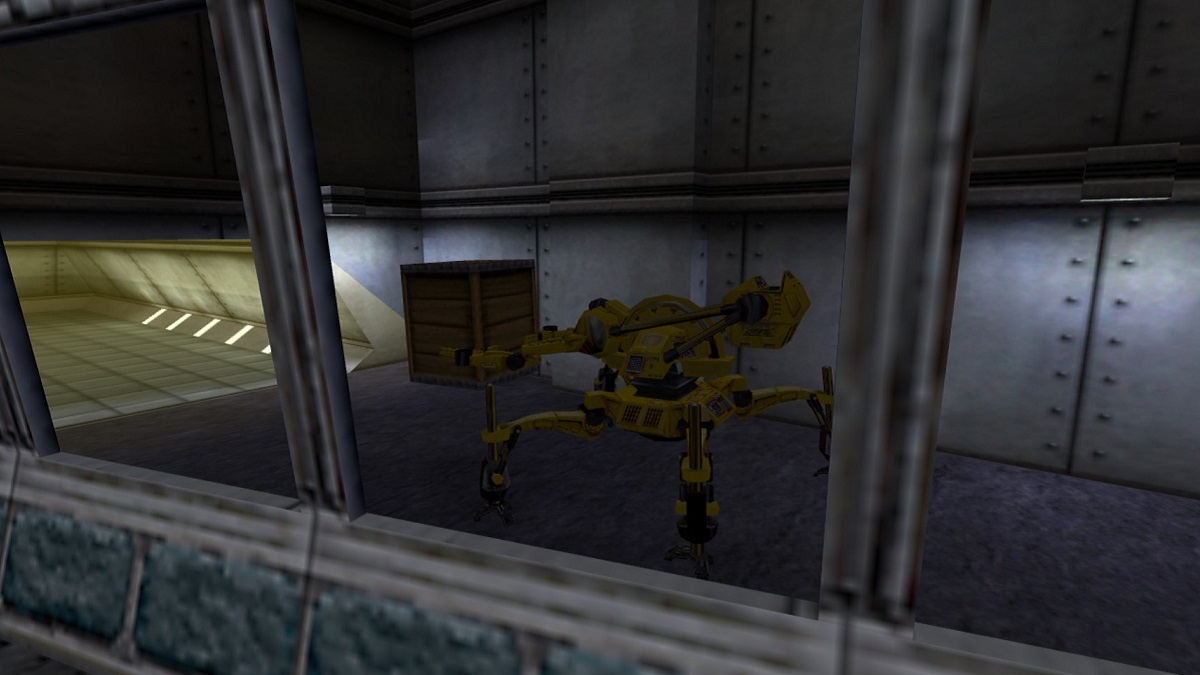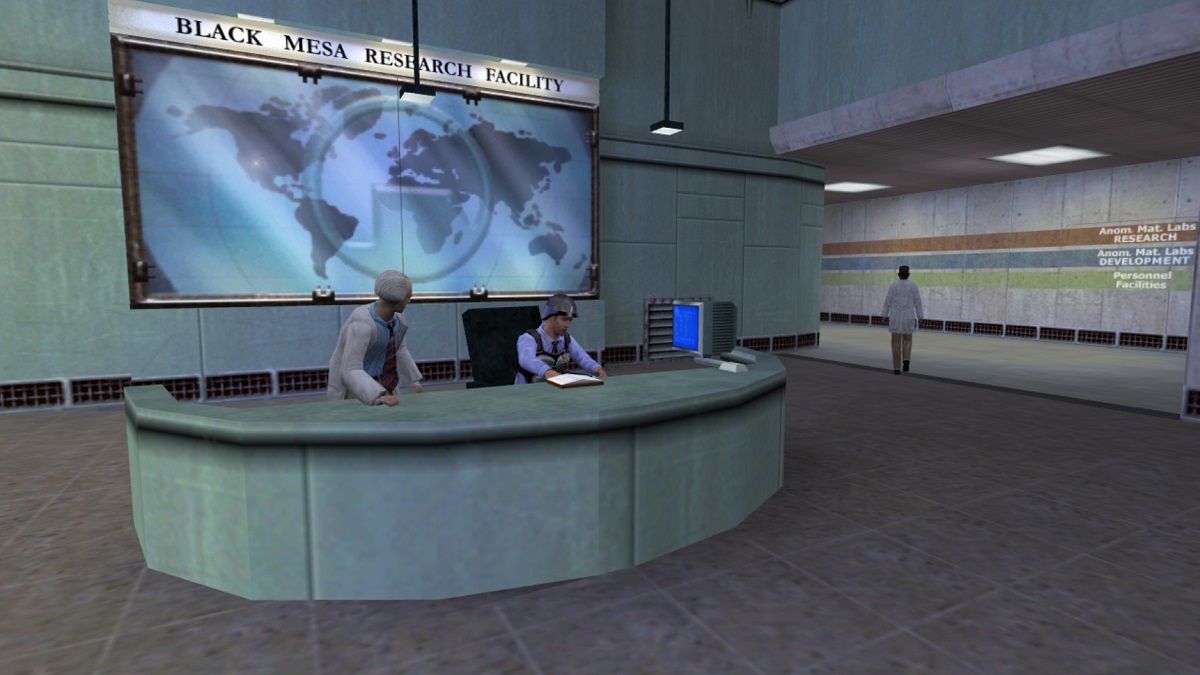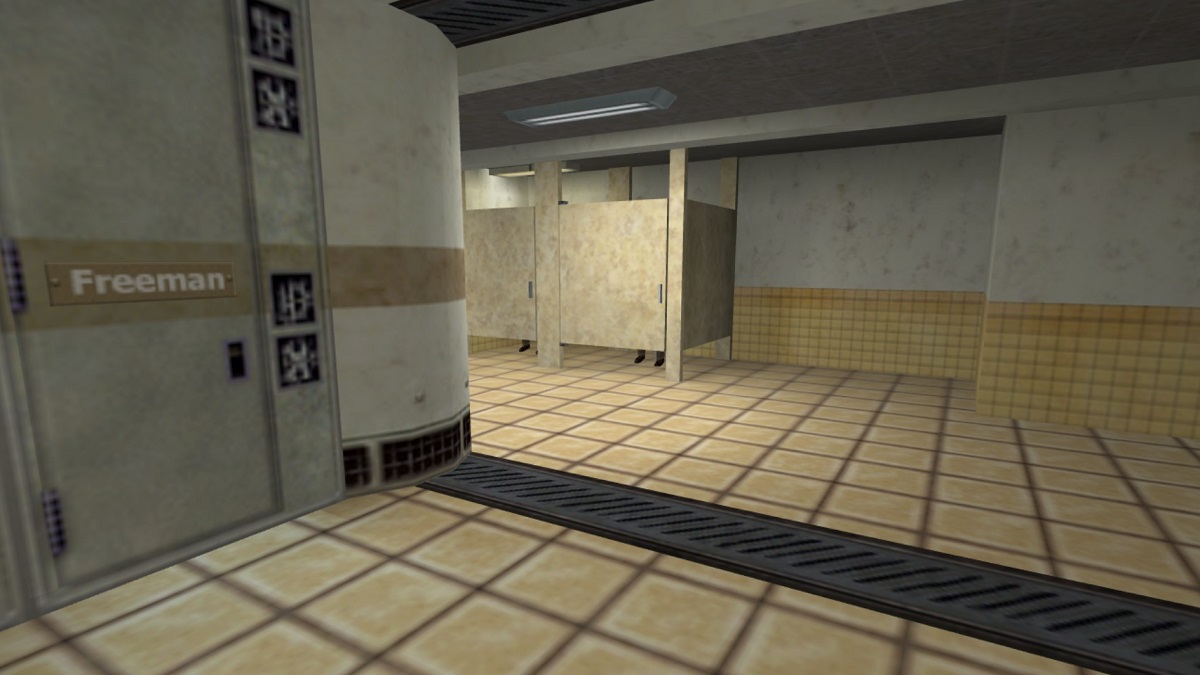Hello. Good day. Welcome. Yes, do come in. Sit down. Anywhere. No, just find a seat anywhere. Yes, there’s fine. Yes, I know it’s cold today, but the heating will come on soon.
Right. Did everyone read the required text for this lecture? Good. There wasn’t any.
Today, we’ll be discussing Valve’s influential 1998 first-person shooter Half-Life. And by “discuss,” I mean I’ll be talking while you sit there and look intrigued — maybe stroke your chins or excitedly scribble notes or something.
Yes, this is indeed a flimsy pre-text to stroke my ego. Why yes, I have lost a bit of weight. Thank you for noticing.
Now, I’ve never been an academic, but it was something of a dream of mine. So, in honor of the 25th anniversary of Half-Life, I want to talk to you today about its opening moments. I want this to be a learning exercise, partly for those who weren’t around when the game was released, but also for those who want a bit of a refresh.
To say that the opening of Half-Life is iconic might seem a bit passé these days. You might even argue that it’s something of a cliché. As gamers, most of us are aware of the legendary status of the late-90s FPS, but it’s worth a revisit for this special milestone. And if that means me replaying the game once more, all the better.
So, what makes it so noteworthy?
Nothing happens for the first 20 minutes or so
Now, there’s a way to turn potential players off a classic video game. Telling someone that they won’t experience any sort of gameplay* in the beginning section is like telling someone to slog through a TV series because it “gets better after episode 965 when you’ve lost the will to live.”

But saying nothing happens at the start of Half-Life is very misleading. In fact, there’s a lot going on in both the monorail sequence and the bit after, right before all the aliens go boo, and the proverbial shit hits the narratological fan.
For those who haven’t played the game, let me set the scene. We open with a black screen. The words “Half-Life” fade in as a robotic voice over a speaker system welcomes us to the “Black Mesa transit system.”
We travel along a monorail, seemingly underground. We can’t exit the train but can walk the interior of it, taking in the industrious sights around us. Along the journey, we see a security guard banging on a locked door, a mysterious man adjusting his tie in a stationary train opposite, giant robots busying themselves with manual labor, and a freakin’ radiation leak that fills the screen with a green glow.
We learn through the on-screen credits that we are Gordon Freeman, a theoretical physicist with a PhD from MIT. We’re an associate researcher, 27, on our way to some sort of test lab. As we approach our stop, we’re greeted by another security guard, this one concerned about our tardiness.
End scene.
At least for the monorail bit.
More than just sightseeing
From this, you can glean the intention behind Half-Life‘s monorail opening. It sets the scene. It establishes character and setting, all without shoehorning in any unnecessary exposition. It’s busy and purposeful, almost as if such set pieces exist independent of us.

But it’s more than just about setting a mood. It’s a way for the developer to showcase some fresh ideas being injected into the first-person genre. In his 25th anniversary playthrough, Valve level designer Dario Casali takes us through this opening section from the perspective of someone who worked on the game.
Our travels through the underground “train ride” are a hint at where the technology at the time was heading. Casali outlines some of the innovations present in this scene, such as scripted sequences, skeletal animations, new ways to render lighting, and everything you see in this opening.
It’s easy to take such things for granted these days, but back in the ’90s, such technologies were not commonplace, if they even existed at all.
Just another day at the office
If the monorail sequence ended and the action began, Half-Life‘s introduction wouldn’t be as worthy of discussion (and subsequently, wouldn’t be the reason this article is as long as it is).

However, we’re not done with the mood-setting and subtle plot elements once we step off the train. As far as Gordon Freeman is concerned, it’s just a regular day at work, though he’s running a bit late. We don’t know if he’s late every day, but this is not a debate about the lax nature of your average post-grad.
Quickly moving on…
Here, we’re in control of the research graduate. We can explore the confines of the Black Mesa Research Facility. Granted it’s not open-world, and it’s limited in scope by today’s standards, but being able to walk into the break room where a scientist lets out his frustrations on an unwilling vending machine or incur the wrath of an angry security guard as you press the emergency button under his desk like a naughty school child was about as immersive as it got in the late-90s.
We can spend a good chunk of our time in this part alone, with nary an enemy to shoot. But it’s not boring, because we’re getting to experience the before. Consciously or otherwise, we know something happens eventually because this is a video game. The walking simulator genre wouldn’t really come into its own for a good few years (though its origins can be traced back to the 1980s).
In short: when you first play Half-Life, especially at a time when FPS games wanted emphasis on the “S” from the moment you clicked “new game,” there’s a sense that this is an atmosphere that favors a slow burn over immediate gun blazing satisfaction. Valve was truly onto something that no other studio at the time was doing.
Which leads me neatly to…
Next slide…
By the time Half-Life came out (November 19, 1998), the first-person shooter genre was already pretty established. The building blocks were done by Wolfenstein 3D, which came out in 1992. But it will always be the original Doom that’s held aloft as the king of first-person violence. It improved what came before it (by the same developer, no less), cementing itself as a part of video game history.

By the time Quake, Hexen, Duke Nukem 3D, Quake 2, and others were released, we were already accustomed to how an FPS worked. I’m going to refer to these as “first room shooters,” in that you only really need to walk into the first room (or turn the first corner) before you have to start blasting.
Of course, ’90s shooters still had stories. Hell, Doom has lore, as told through the Doom Bible. And Duke Nukem certainly upped the ante with its voiced yet gaudy protagonist and dig at pop culture. But Half-Life – especially the introduction – centered the story.
As I turn into an old man (“no, surely not, Andy! Forty is hardly old” – someone, hopefully) and see the games I recall from my younger days grow alongside me, I can feel my history and relevance fading.
To see Half-Life turning a quarter of a century old gives me a weird sense of purpose. I don’t want to get all “get off my lawn” about this, but there will be people reading right now who are consciously aware of the game’s influence, but are immune to how it felt to play it at the time because they weren’t there. And that’s okay. I wasn’t around when Space Invaders was released.
If there’s one thing to take away from this lecture (and it is a lecture – albeit a written one), it’s that it’s easy to become blind to the things that came before us. The opening 20 minutes or so of Half-Life has its place as an important part of gaming. Look, I guess what I’m trying to say is…*RIIIING*
Oh. Time’s up. Class dismissed.
*There’s a whole field of academia dedicated to pondering what constitutes a “game” and what we mean when we talk about “gameplay.” If you’re interested, check out your local library or microfiche.














Published: Nov 16, 2023 03:17 pm